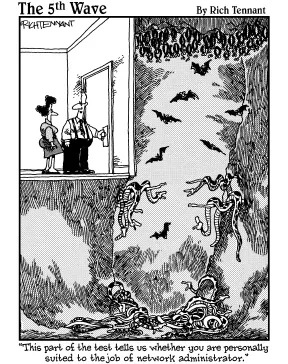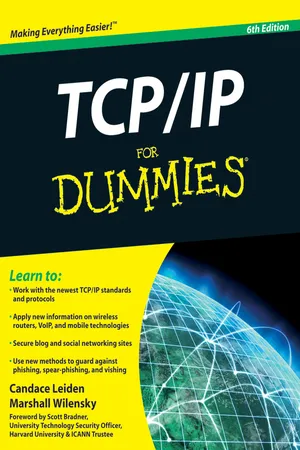

- English
- ePUB (mobile friendly)
- Available on iOS & Android
TCP / IP For Dummies
About this book
Packed with the latest information on TCP/IP standards and protocols
TCP/IP is a hot topic, because it's the glue that holds the Internet and the Web together, and network administrators need to stay on top of the latest developments. TCP/IP For Dummies, 6th Edition, is both an introduction to the basics for beginners as well as the perfect go-to resource for TCP/IP veterans.
The book includes the latest on Web protocols and new hardware, plus very timely information on how TCP/IP secures connectivity for blogging, vlogging, photoblogging, and social networking. Step-by-step instructions show you how to install and set up TCP/IP on clients and servers; build security with encryption, authentication, digital certificates, and signatures; handle new voice and mobile technologies, and much more.
- Transmission Control Protocol / Internet Protocol (TCP/IP) is the de facto standard transmission medium worldwide for computer-to-computer communications; intranets, private internets, and the Internet are all built on TCP/IP
- The book shows you how to install and configure TCP/IP and its applications on clients and servers; explains intranets, extranets, and virtual private networks (VPNs); provides step-by-step information on building and enforcing security; and covers all the newest protocols
- You'll learn how to use encryption, authentication, digital certificates, and signatures to set up a secure Internet credit card transaction
Find practical security tips, a Quick Start Security Guide, and still more in this practical guide.
Frequently asked questions
- Essential is ideal for learners and professionals who enjoy exploring a wide range of subjects. Access the Essential Library with 800,000+ trusted titles and best-sellers across business, personal growth, and the humanities. Includes unlimited reading time and Standard Read Aloud voice.
- Complete: Perfect for advanced learners and researchers needing full, unrestricted access. Unlock 1.4M+ books across hundreds of subjects, including academic and specialized titles. The Complete Plan also includes advanced features like Premium Read Aloud and Research Assistant.
Please note we cannot support devices running on iOS 13 and Android 7 or earlier. Learn more about using the app.
Information

Table of contents
- Cover
- Table of Contents
- Title Page
- Foreword
- Introduction
- Part I: TCP/IP from Names to Addresses
- Part II: Getting Connected
- Part III: Configuring Clients and Servers: Web, E-Mail, and Chat
- Part IV: Even More TCP/IP Applications and Services
- Part V: Network Troubleshooting and Security
- Part VI: The Part of Tens